Table of contents
- Why Drupal is a good choice for web development
- Why Tailwind CSS is great for web developers
- Why Integrate Drupal with Tailwind CSS?
- Step-by-Step Guide to Integrating Drupal with Tailwind CSS
- Step 1: Get your prerequisites ready
- Step 2: Create a custom theme
- Step 3: Install and set up Tailwind CSS
- Step 4: Adding Tailwind CSS to our Drupal Theme
- Using Tailwind CSS in our Drupal theme
- Final Thoughts
If you’re tired of spending hours tweaking CSS stylesheets to get your website looking just right, then you should consider a new way of CSS’ing (yeah, we just made it up). We’re talking about Tailwind CSS - a different way of doing CSS. It uses a utility-first approach, which means instead of creating a class for a component, let’s say a button, you would use a pre-defined class that’s built to style the button, like a “font-bold” or a “text-white”. All of this right from the comfort of your HTML!
Couple Tailwind CSS, a sleek, utility-based open-source CSS framework, with a modular, highly customizable, and modern CMS like Drupal 10, and you have a powerhouse combination!
In this article, we’ll be talking about Drupal and Tailwind CSS AND how you can integrate them seamlessly to build modern, responsive, and visually stunning websites
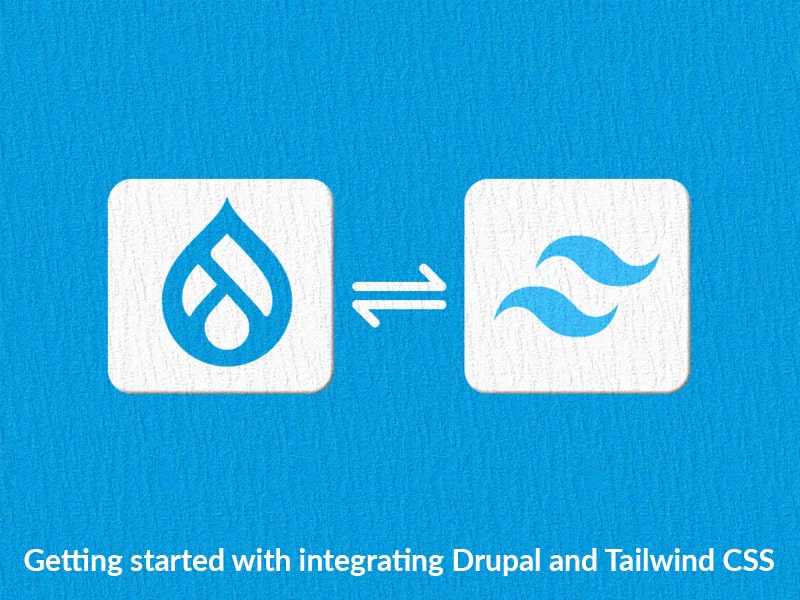
Why Drupal is a good choice for web development
Drupal is an open-source content management system (CMS) that has been gaining popularity among web developers for its versatility and powerful features. The latest version, Drupal 10 brings a host of new features and improvements meant to simplify development and enhance user experience.
1. Highly customizable design: One of the biggest advantages of using Drupal is its highly customizable design. With a wide range of themes and templates available, developers have the freedom to create unique and visually appealing websites that cater to their client's specific needs.
2. Flexibility and scalability: Drupal's modular architecture makes it incredibly flexible and scalable, making it suitable for building websites of any size or complexity. It offers a vast library of modules that can be easily integrated into your website, providing additional functionality such as e-commerce capabilities, social media integration, multilingual support, and more.
3. Robust security measures: Security is a major concern in today's times; hence it is crucial to choose a CMS that prioritizes it. Drupal has always been recognized as one of the most secure CMS platforms due to its stringent security standards and frequent updates that address any potential vulnerabilities promptly.
4. SEO-friendly: Search Engine Optimization (SEO) is vital for every website's success as it determines its visibility on search engines like Google. Drupal's built-in SEO tools assist developers in optimizing their websites by generating search engine-friendly URLs, meta tags, and sitemaps, and providing customizable page titles and descriptions.
5. Active community support: Drupal benefits from a substantial and engaged group of developers who contribute to its ongoing evolution and offer support to fellow users. This community-driven approach ensures that any issues or bugs are addressed promptly, and new updates and features are released regularly.
Why Tailwind CSS is great for web developers
Tailwind CSS has gained immense popularity in the web development community due to its numerous benefits and advantages.
1. Highly customizable: One of the biggest advantages of Tailwind CSS is its high level of customization. Unlike other popular front-end frameworks like Bootstrap or Foundation, Tailwind does not come with predefined styles and components. Instead, it provides a comprehensive set of utility classes that can be used to create custom designs according to your specific project needs. This allows developers to have complete control over their designs and enables them to create unique and personalized user experiences.
2. Lightweight: Another major benefit of using Tailwind CSS is its lightweight nature. Since it only generates the required classes based on your design choices, it helps keep the file size small and improves website performance. This is especially beneficial for Drupal websites which often have heavy content and functionality that can slow down page loading speed.
3. Mobile-responsive: With more people accessing websites through mobile devices, having a mobile-responsive design has become crucial for any website's success. The use of Tailwind CSS makes it easier to create responsive designs without adding extra code or media queries. Its mobile-first approach ensures that your website looks great on all screen sizes without compromising on performance.
4. Faster development process: By eliminating the need for manually writing complex CSS rules, Tailwind speeds up the development process significantly. It also reduces the chances of errors as developers can easily reuse existing utility classes instead of creating new ones from scratch every time they need a similar style element.
5. Scalable designs: With Tailwind CSS, you can create scalable designs that are easy to maintain and modify in the long run. As your website grows and evolves, making changes to its design becomes more manageable with Tailwind's utility classes, as opposed to traditional frameworks where modifying styles can be a tedious process.
Why Integrate Drupal with Tailwind CSS?
One of the main reasons to integrate Drupal with Tailwind CSS is its ability to simplify web development. With Tailwind CSS, developers can avoid writing repetitive and lengthy code for styling. Instead, they can use pre-built classes that provide consistent and reusable design patterns. This not only saves time but also results in cleaner code that is easier to maintain.
Another benefit of integrating Drupal with Tailwind CSS is its responsive design capabilities. With the increasing use of mobile devices, it has become essential for websites to be optimized for all screen sizes. Thanks to Tailwind's built-in responsive utilities, designers can easily build responsive layouts without having to write separate media queries for different devices.
Step-by-Step Guide to Integrating Drupal with Tailwind CSS
Step 1: Get your prerequisites ready
- Local Drupal Setup
- NPM and Yarn package Managers
- Drush
- Lando
Step 2: Create a custom theme
We will begin by creating a Drupal custom theme and then will integrate Tailwind CSS into the same.
- In this tutorial, I am using the starter kit theme command to generate my custom theme.
- Go to the web directory and type in the following command in the terminal
- php core/scripts/drupal generate-theme drupal_tailwind_theme after pressing the enter key our custom theme will be generated as shown below:
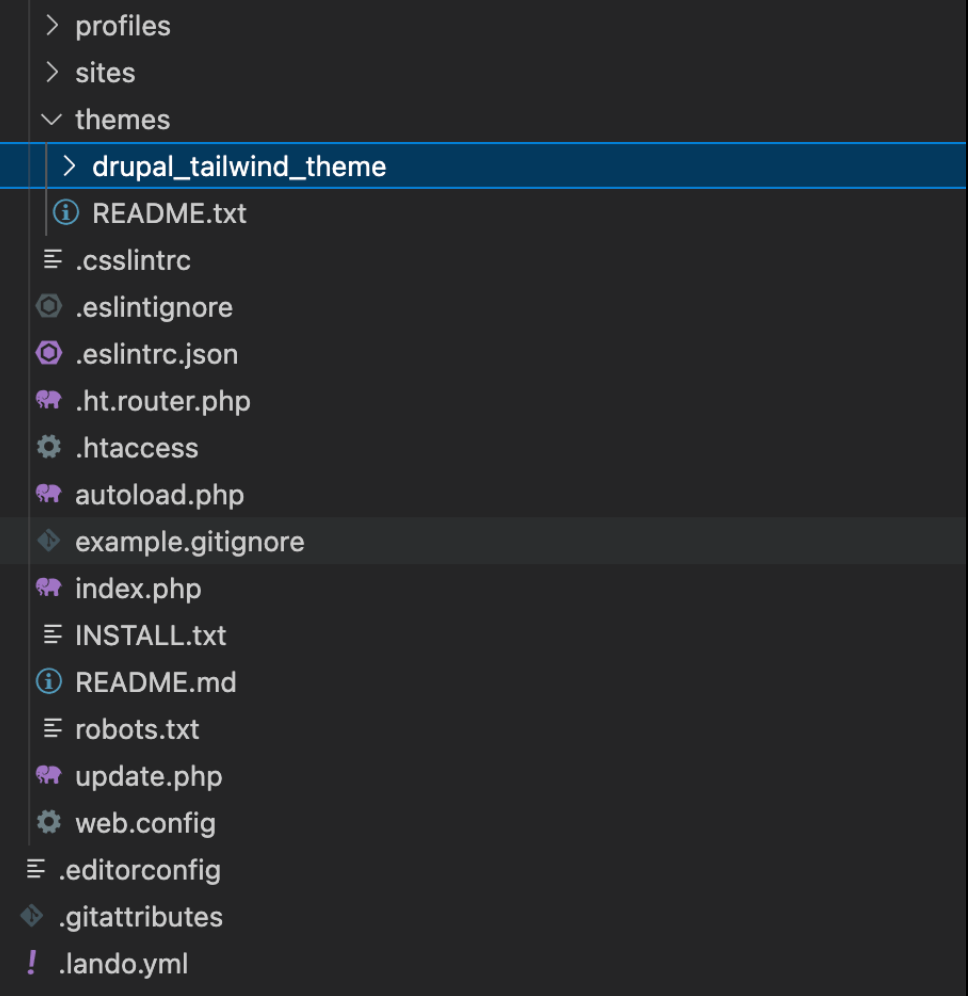
- Next, we will generate the package.json file which we require to initialize a new node.js project.
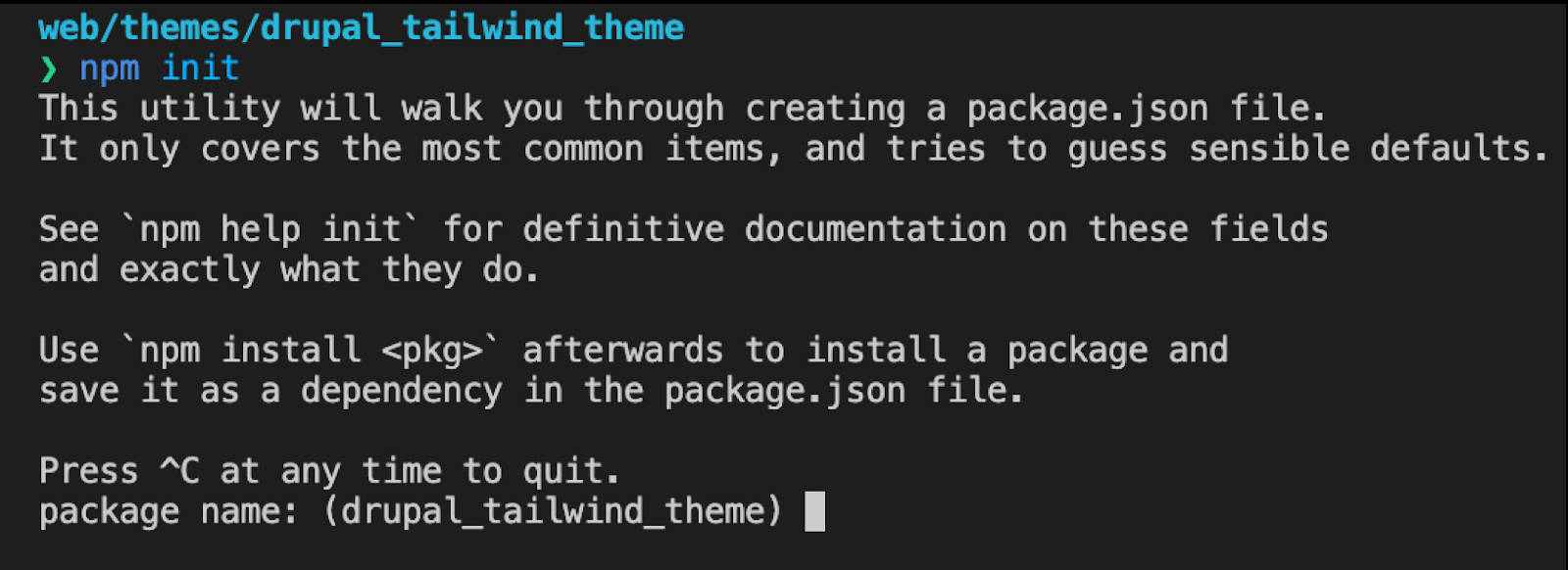
- Go to the terminal and type in the following command npm init and it prompts us with a series of questions regarding our project since for this tutorial I am keeping everything default by pressing the enter key until our package.json file is added as shown in the image.
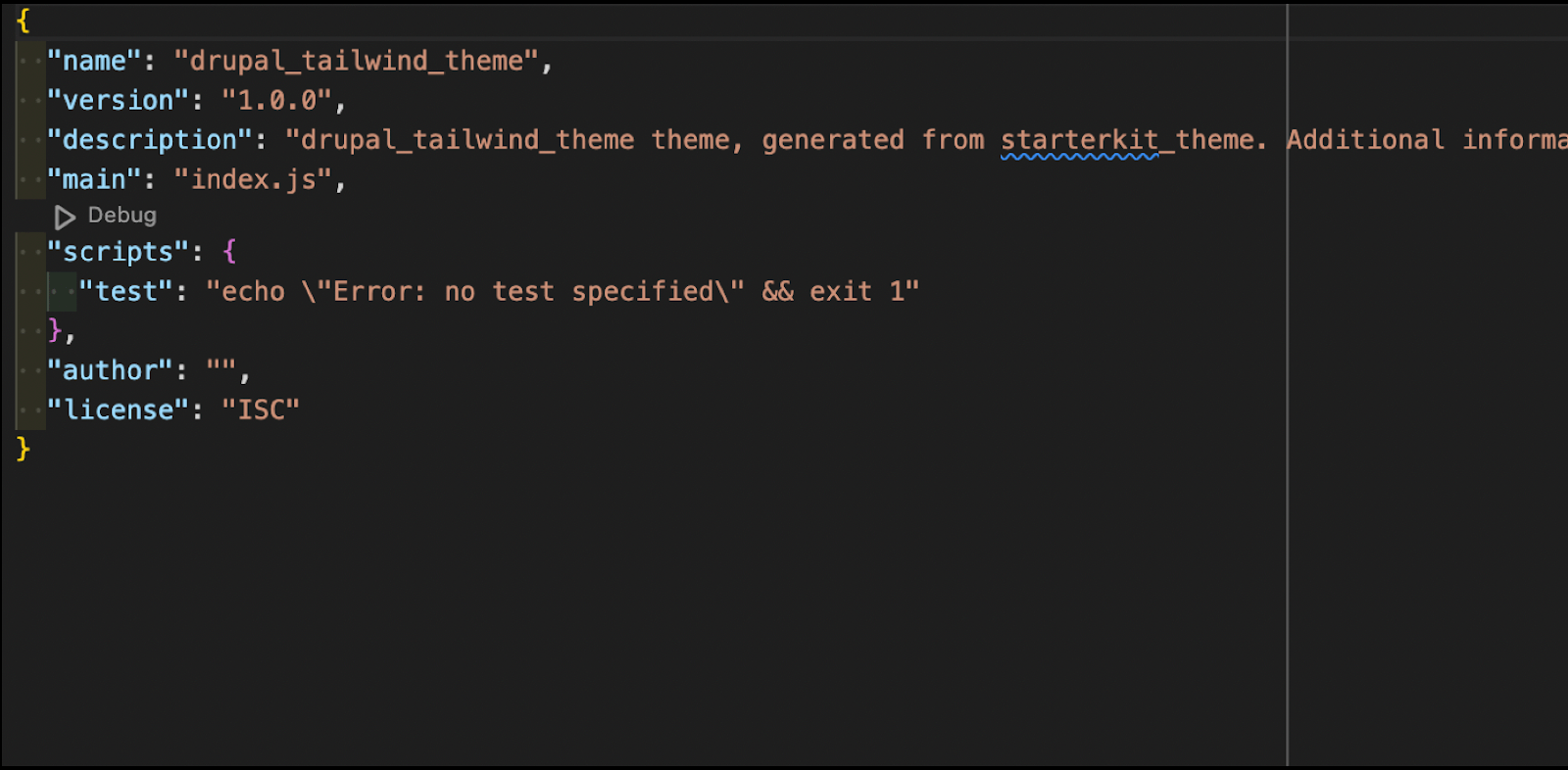
Step 3: Install and set up Tailwind CSS
- Now let’s install Tailwind and its dependencies and also configure it.
- In the terminal, run the following command:
npm install -D tailwindcss postcss autoprefixer - Next, let’s generate a Tailwind CSS config file using the following command:
npx tailwindcss init -p - Go to the tailwind.config.js file and set the path for Tailwind to scan. Since our Twig templates are in the templates directory, we will use that path as shown in the image.
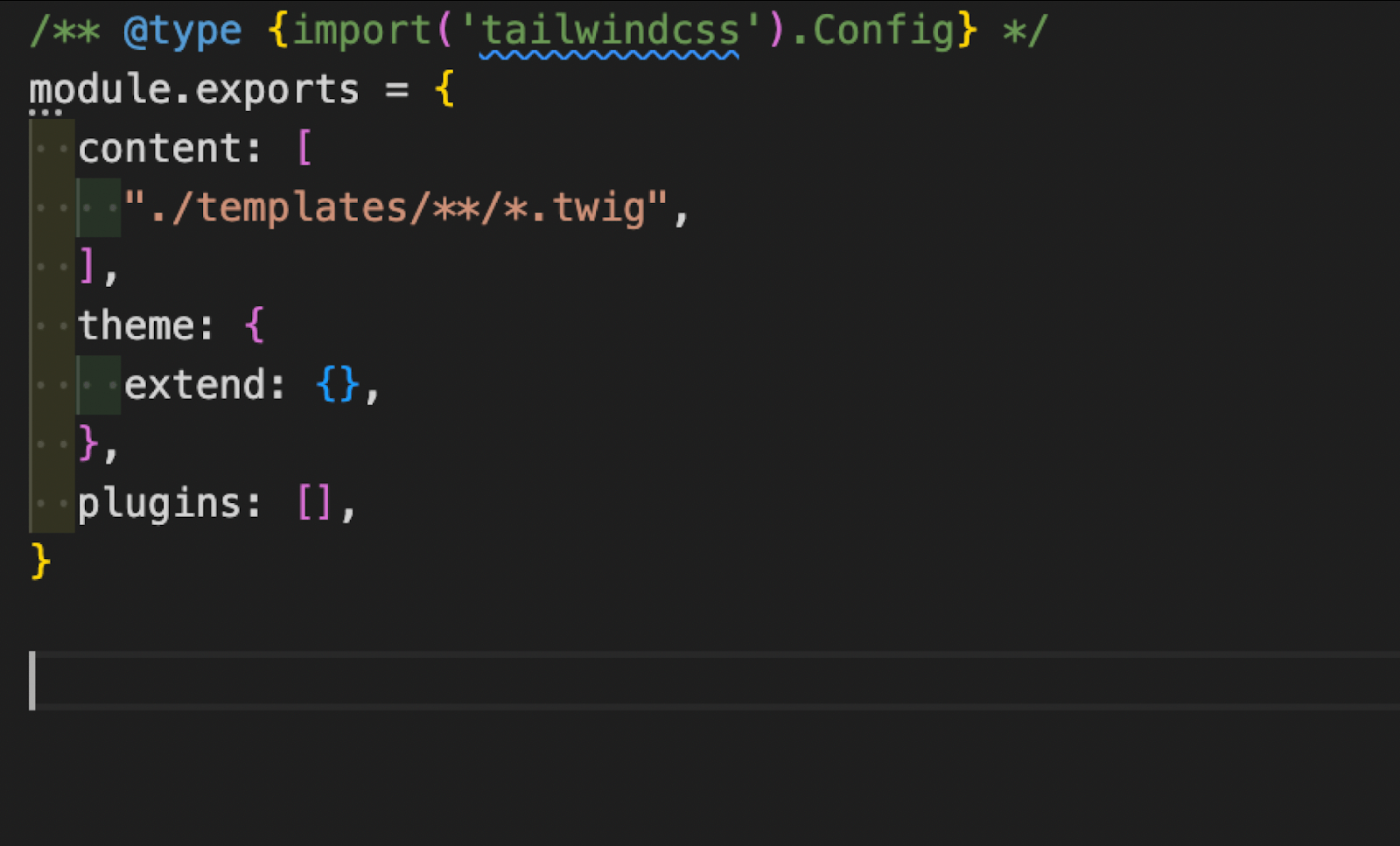
- Now we need to create a CSS file to put the Tailwind directives in.
- Go to the src folder, create a file named index.css, and paste the following directives:
@tailwind base;
@tailwind components;
@tailwind utilities;
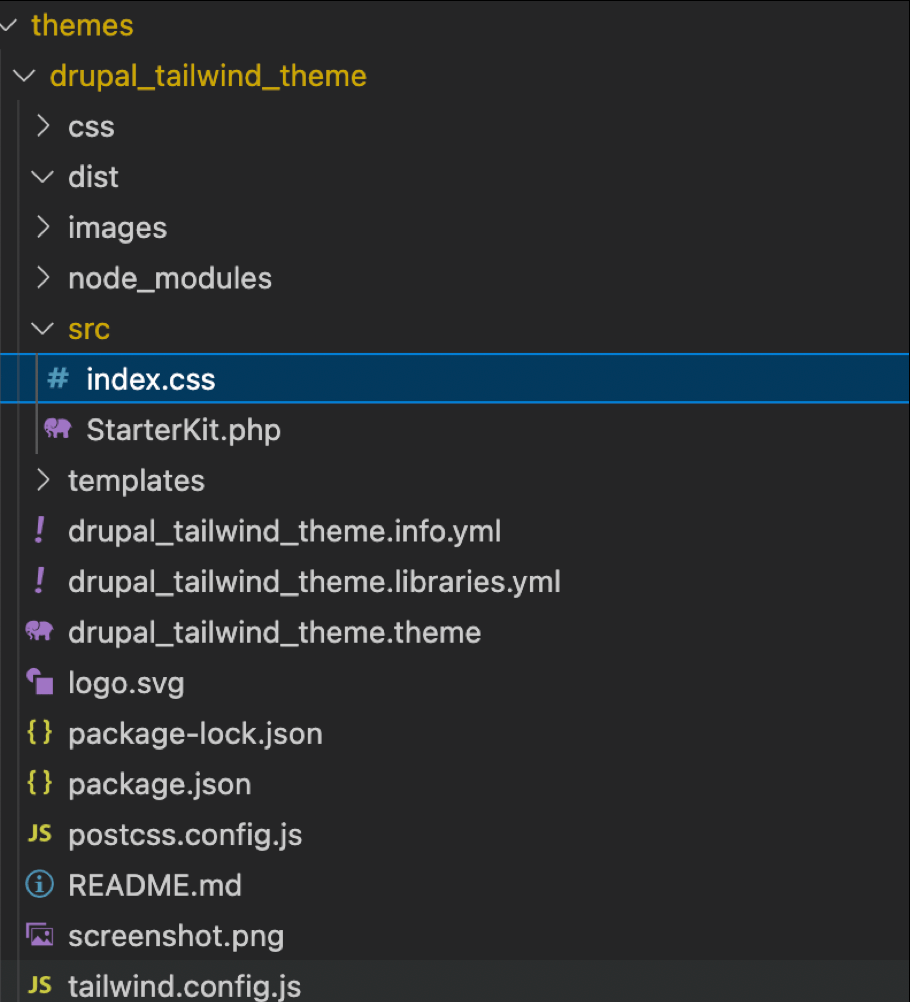
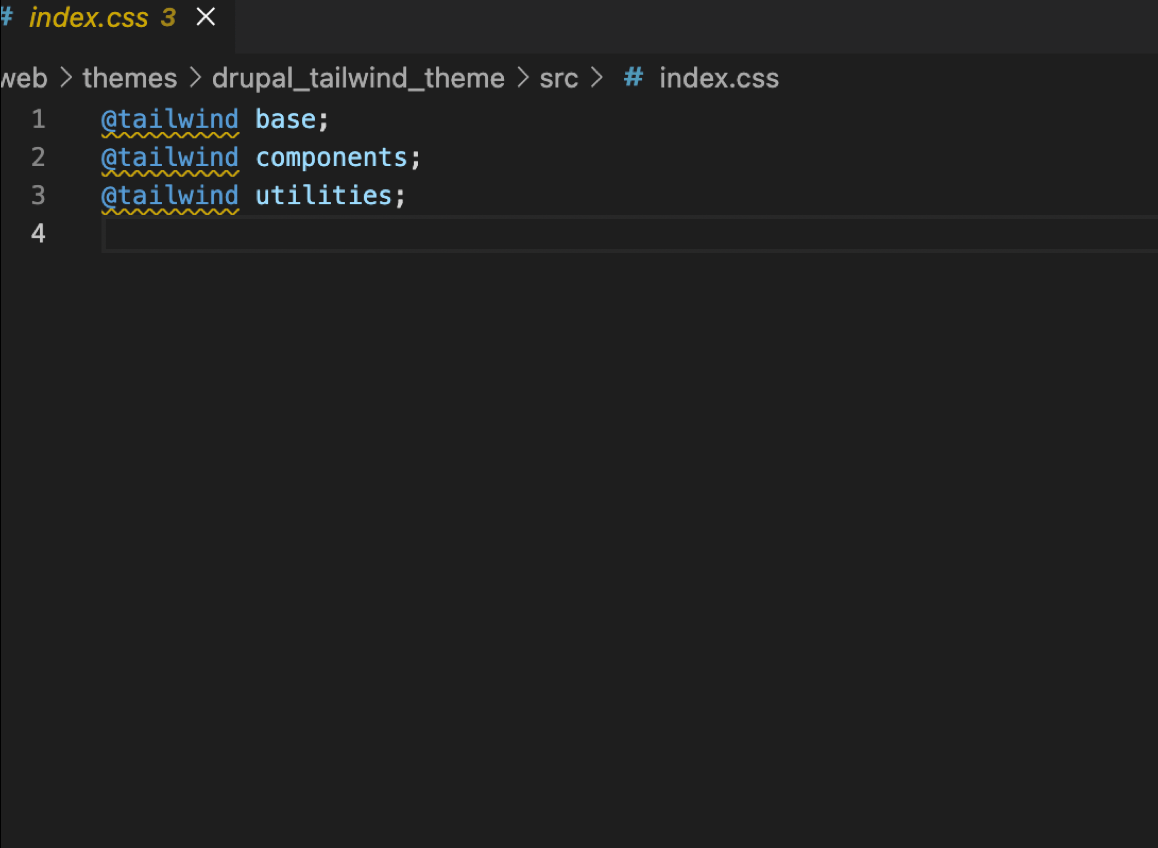
- Create a folder where the Tailwind CSS will be compiled. On the same level as the src folder, create a folder named dist (or any name you prefer).

- We now run the following command:
npx tailwindcss –input src/index.css –output dist/index.css
After executing this command, we will be able to see the compiled version of the Tailwindcss in the dist folder. - We can verify it by going to the dist folder as shown in the image.
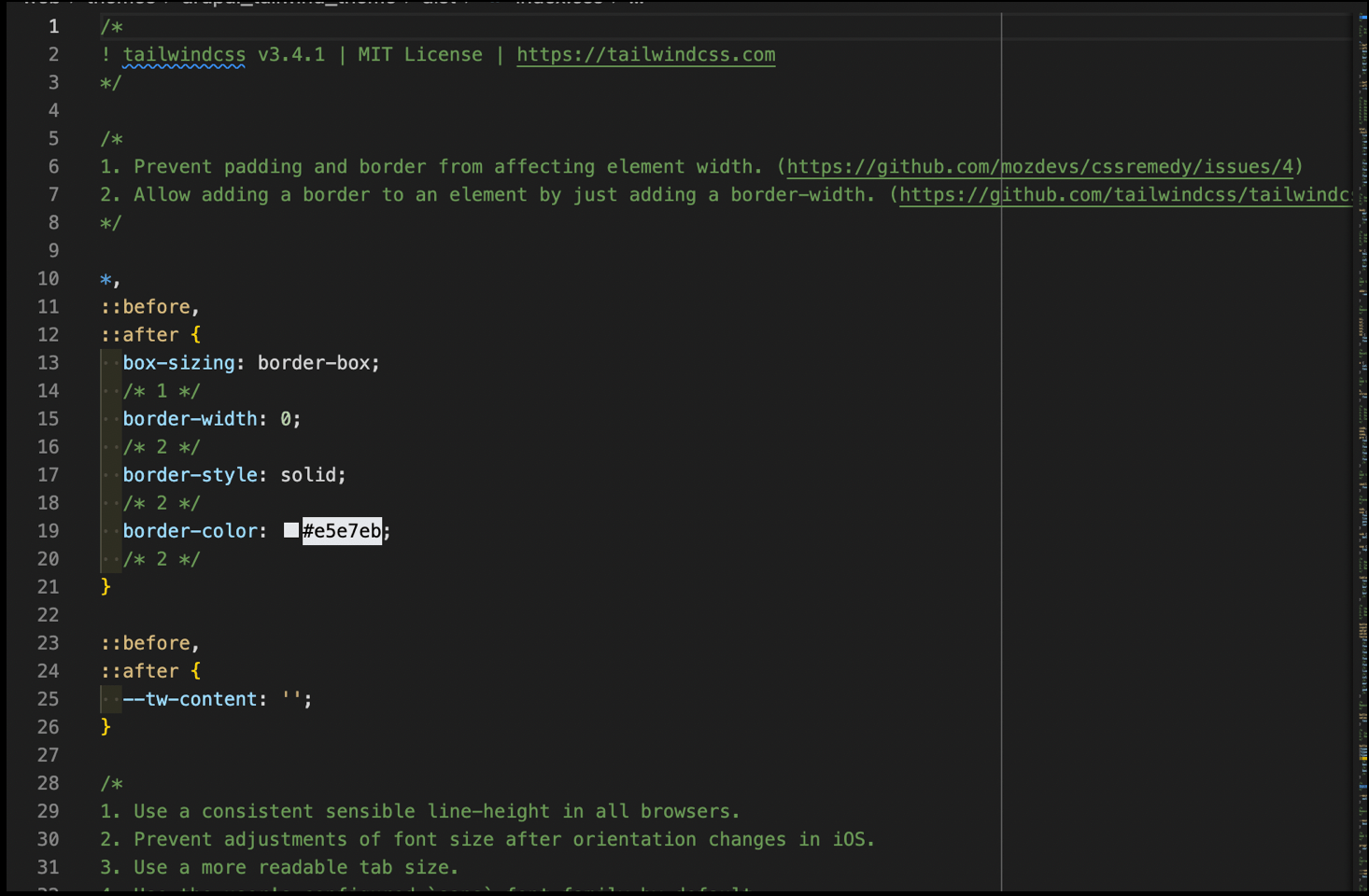
- In the package.json file, we will be adding the scripts dev and watch which can be executed using npm run dev & npm run watch or using yarn dev & yarn watch.
- The script dev compiles the code once as per command while the watch command keeps a watch on any change.
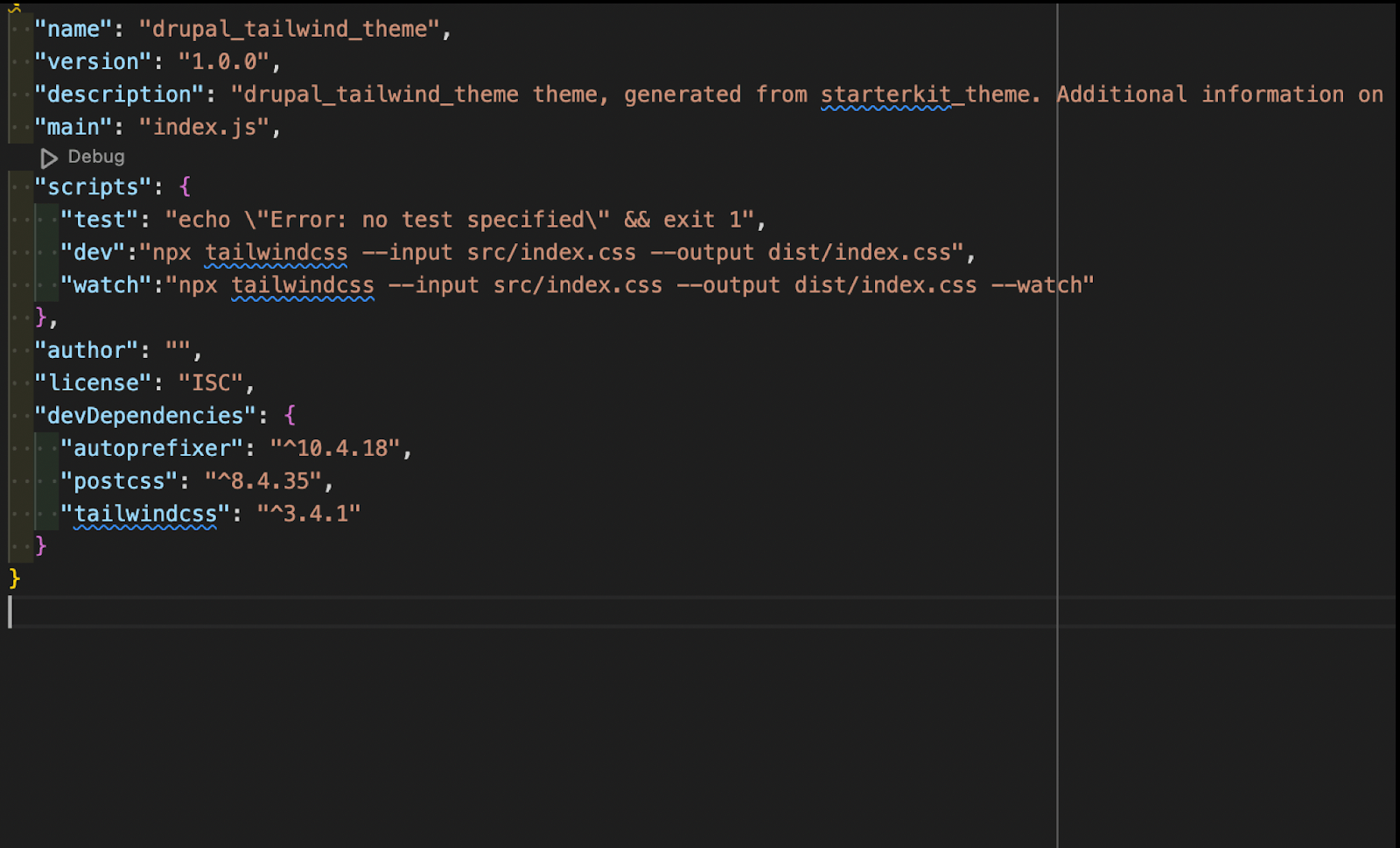
Step 4: Adding Tailwind CSS to our Drupal Theme
- Now we will be adding Tailwind to our Drupal site. For that, we can add a library namely tailwind, and give it a CSS path of the dist/index.css. That means where we have our compiled tailwind.
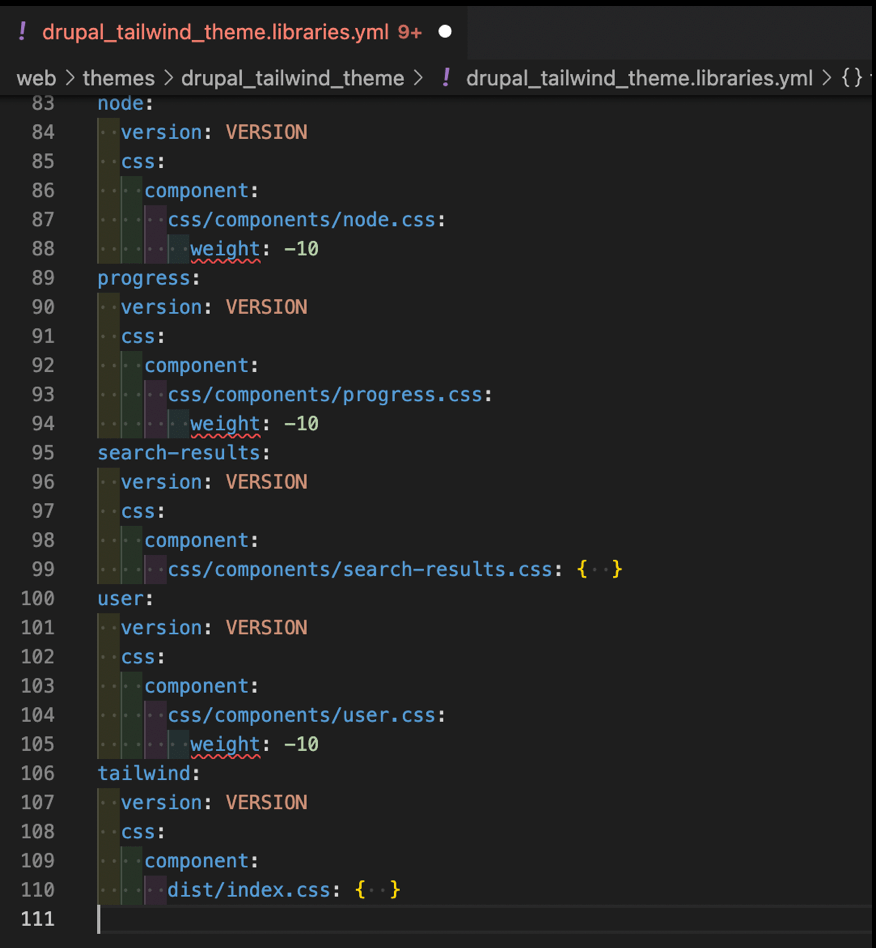
- Next, we can add that library either globally or to the specific template. For the purpose of this tutorial, I will be adding it globally.
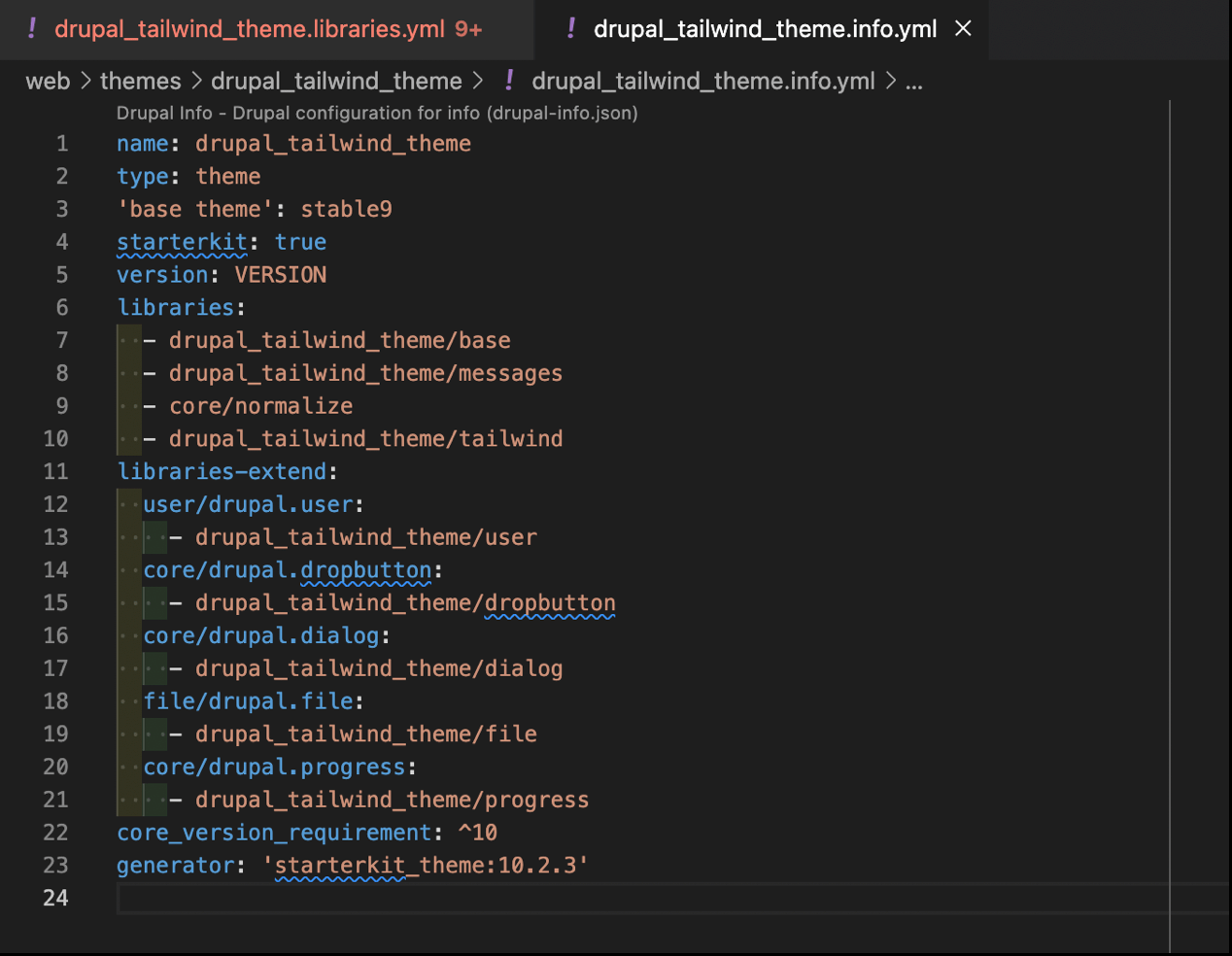
Using Tailwind CSS in our Drupal theme
For this tutorial, I am using the page.html.twig file and adding a red background color by including the class bg-red-500 in the markup. Clear the cache and check the output. Our Tailwind CSS class has applied the desired background color.
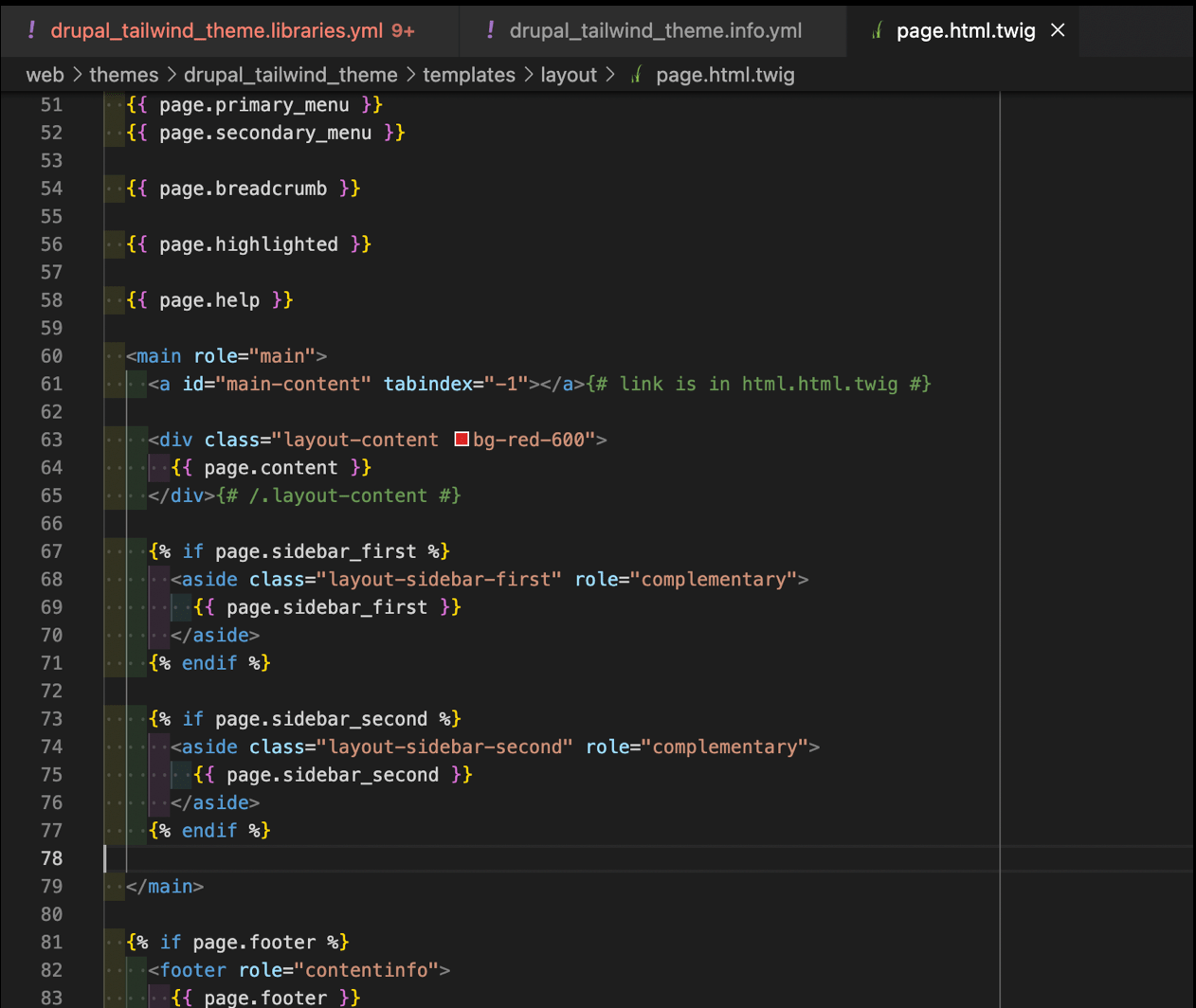
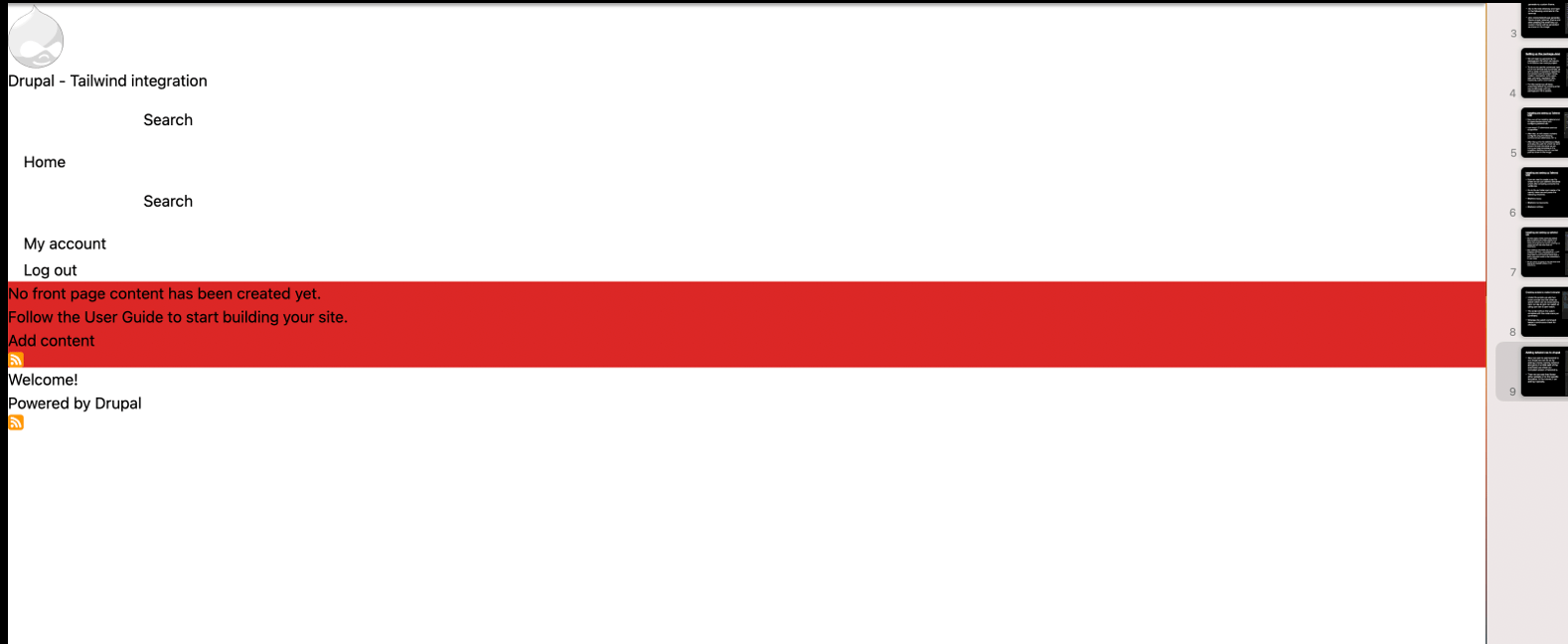
Final Thoughts
Tailwind CSS is a great choice when you want to build websites quickly and easily. It integrates well with Drupal and the combination of these two tools creates a powerful synergy for drupal web development. Reach out to us if you would like to learn more about how Specbee’s Drupal experts can help you create stunning web experiences with Drupal and Tailwind CSS.








